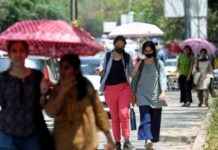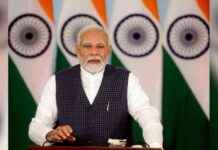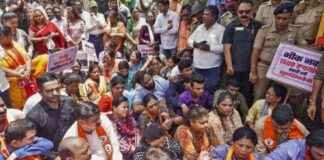Challenges and Opportunities in Mumbai’s Climate Planning
In a recent discussion titled Mumbai Happening, organised by Mumbai First, experts highlighted the pressing need for the city to adopt a long-term approach to address the challenges posed by climate change. The event, held at the IMC Babubhai Chinai Hall, marked the fourth iteration of the series, focusing on sustainable strategies for Mumbai’s future.
The discussion shed light on the potential benefits of emulating the water management techniques of the Netherlands, a country renowned for its innovative solutions to combat rising sea levels. Bart De Jong, the Netherlands’ consul general, underscored the fact that 26% of his country lies below sea level, including major cities like The Hague and Amsterdam. With 60% of the Netherlands susceptible to flooding, the nation has implemented groundbreaking projects such as Room for the River, Delta Works, and urban flood plains to mitigate the risks posed by water.
De Jong’s presentation resonated with senior officials in Maharashtra, who acknowledged the complexities of implementing similar policies in Mumbai due to its unique topography and challenges. P. Velrasu, Divisional Commissioner of Konkan, highlighted Mumbai’s vulnerability, particularly in the western part of the city where marginalized communities reside along the banks. These communities are at high risk of exposure to the impacts of climate change, necessitating strategic long-term planning to safeguard their livelihoods and well-being.
Lessons from the Netherlands: A Blueprint for Mumbai’s Resilience
The Netherlands’ success in managing water offers valuable lessons for Mumbai as it grapples with the escalating threats of sea level rise and flooding. By prioritizing proactive measures and investing in sustainable infrastructure, the Netherlands has transformed its vulnerability into resilience, serving as a model for other coastal cities facing similar challenges.
One of the key initiatives highlighted by De Jong was the Room for the River project, which involves creating additional space along riverbanks to accommodate floodwaters during periods of high water levels. This innovative approach not only reduces the risk of flooding but also enhances biodiversity and creates recreational opportunities for communities living in flood-prone areas.
Similarly, the Delta Works project showcases the Netherlands’ engineering prowess in constructing a series of dams, dikes, and storm surge barriers to protect low-lying regions from the threat of inundation. By leveraging a combination of nature-based solutions and cutting-edge technology, the Netherlands has effectively safeguarded its population and infrastructure against the impacts of climate change.
Addressing Mumbai’s Topographical Challenges: A Call for Forward-Thinking Strategies
While the Netherlands’ experiences offer valuable insights, Mumbai must navigate its unique topographical constraints and urban dynamics to develop tailored solutions for climate resilience. Velrasu’s emphasis on the importance of long-term planning spanning 40 to 50 years underscores the need for strategic foresight and proactive action to safeguard Mumbai’s future.
The western part of Mumbai, with its densely populated settlements along the coastline, presents a critical challenge in terms of vulnerability to sea level rise and extreme weather events. The presence of marginalized communities exacerbates the risks faced by these populations, calling for inclusive and equitable strategies to enhance their resilience and adaptive capacity.
In contrast, the eastern side of the city benefits from natural features such as mangroves and creeks, which offer some level of protection against coastal hazards. Leveraging these natural assets through sustainable management and conservation efforts can bolster Mumbai’s resilience and enhance its capacity to withstand the impacts of climate change.
Building Climate Resilience through Collaborative Partnerships and Innovation
To effectively address the multifaceted challenges posed by climate change, Mumbai must foster collaborative partnerships between government agencies, civil society organizations, and the private sector. By leveraging the expertise and resources of diverse stakeholders, the city can develop holistic solutions that integrate scientific knowledge, community perspectives, and innovative technologies to build resilience at the local level.
Investing in green infrastructure, such as rain gardens, permeable pavements, and rooftop gardens, can help mitigate the impacts of urban heat islands, reduce stormwater runoff, and enhance biodiversity in urban areas. These nature-based solutions not only provide environmental benefits but also improve the quality of life for residents and contribute to sustainable urban development.
Furthermore, promoting climate-smart urban planning practices, such as compact city design, mixed land use zoning, and transit-oriented development, can reduce carbon emissions, enhance energy efficiency, and improve air quality in Mumbai. By prioritizing sustainable modes of transportation, such as cycling, walking, and public transit, the city can reduce its dependence on fossil fuels and promote a healthier and more livable urban environment for all residents.
In conclusion, Mumbai’s journey towards climate resilience requires a concerted effort to integrate local knowledge, innovative solutions, and inclusive governance processes to build a sustainable and equitable future for all. By learning from global best practices, such as those implemented in the Netherlands, and adapting them to suit Mumbai’s unique context, the city can pave the way for a more resilient and prosperous future for generations to come.




















